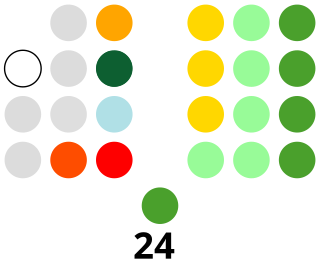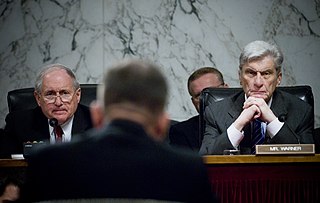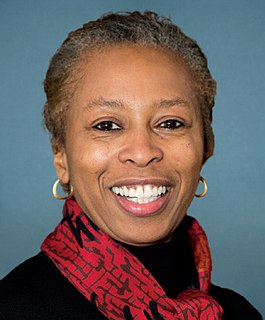Related Research Articles

The 10th United States Congress was a meeting of the legislative branch of the United States federal government, consisting of the United States Senate and the United States House of Representatives. It met in Washington, D.C. from March 4, 1807, to March 4, 1809, during the seventh and eighth years of Thomas Jefferson's presidency. The apportionment of seats in the House of Representatives was based on the Second Census of the United States in 1800. Both chambers had an overwhelming Democratic-Republican majority.

The 11th United States Congress was a meeting of the legislative branch of the United States federal government, consisting of the United States Senate and the United States House of Representatives. It met in Washington, D.C. from March 4, 1809 to March 4, 1811, during the first two years of James Madison's presidency. The apportionment of seats in the House of Representatives was based on the Second Census of the United States in 1800. Both chambers had a Democratic-Republican majority.

The 14th United States Congress was a meeting of the legislative branch of the United States federal government, consisting of the United States Senate and the United States House of Representatives. It met in the Old Brick Capitol in Washington, D.C. from March 4, 1815, to March 4, 1817, during the seventh and eighth years of James Madison's presidency. The apportionment of seats in the House of Representatives was based on the Third Census of the United States in 1810. Both chambers had a Democratic-Republican majority.

The 17th United States Congress was a meeting of the legislative branch of the United States federal government, consisting of the United States Senate and the United States House of Representatives. While its term was officially March 4, 1821, to March 4, 1823, during the fifth and sixth years of James Monroe's presidency, its first session began on December 3, 1821, ending on May 8, 1822, and its second session began on December 2, 1822, to March 3, 1823. The apportionment of seats in the House of Representatives was based on the third Census of the United States in 1810. Both chambers had a Democratic-Republican majority.

The 21st United States Congress was a meeting of the legislative branch of the United States federal government, consisting of the United States Senate and the United States House of Representatives. It met in Washington, D.C. from March 4, 1829, to March 4, 1831, during the first two years of Andrew Jackson's presidency. The apportionment of seats in the House of Representatives was based on the Fourth Census of the United States in 1820. Both chambers had a Jacksonian majority.

Congress of the Philippines is the national legislature of the Philippines. It is a bicameral body consisting of the Senate, and the House of Representatives, although colloquially, the term "Congress" commonly refers to just the latter.

The Alaska Legislature is the state legislature of the U.S. state of Alaska. It is a bicameral institution consisting of the 40-member Alaska House of Representatives and the 20-member Alaska Senate. There are 40 House Districts (1–40) and 20 Senate Districts (A–T). With a total of 60 lawmakers, the Alaska Legislature is the smallest bicameral state legislature in the United States and the second-smallest of all state legislatures. There are no term limits for either chamber.

A congressional committee is a legislative sub-organization in the United States Congress that handles a specific duty. Committee membership enables members to develop specialized knowledge of the matters under their jurisdiction. As "little legislatures", the committees monitor ongoing governmental operations, identify issues suitable for legislative review, gather and evaluate information, and recommend courses of action to their parent body. Woodrow Wilson once wrote, "it is not far from the truth to say that Congress in session is Congress on public exhibition, whilst Congress in its committee rooms is Congress at work." It is not expected that a member of Congress be an expert on all matters and subject areas that come before Congress. Congressional committees provide valuable informational services to Congress by investigating and reporting about specialized subjects.
In United States parliamentary procedure, a discharge petition is a means of bringing a bill out of committee and to the floor for consideration without a report from the committee by "discharging" the committee from further consideration of a bill or resolution.
A concurrent resolution is a resolution adopted by both houses of a bicameral legislature that lacks the force of law and does not require the approval of the chief executive (president). Concurrent resolutions are typically adopted to regulate the internal affairs of the legislature that adopted them, or for other purposes, if authority of law is not necessary.

The 39th United States Congress was a meeting of the legislative branch of the United States federal government, consisting of the United States Senate and the United States House of Representatives. It met in Washington, D.C. from March 4, 1865, to March 4, 1867, during the first month of Abraham Lincoln's fifth year as president, and the first two years of the administration of his successor, U.S. President Andrew Johnson.

The 44th United States Congress was a meeting of the legislative branch of the United States federal government, consisting of the United States Senate and the United States House of Representatives. It met in Washington, D.C. from March 4, 1875, to March 4, 1877, during the seventh and eighth years of Ulysses S. Grant's presidency. The apportionment of seats in the House of Representatives was based on the Ninth Census of the United States in 1870. For the first time since the American Civil War, the House had a Democratic majority. The Senate maintained a Republican majority.

The 42nd United States Congress was a meeting of the legislative branch of the United States federal government, consisting of the United States Senate and the United States House of Representatives. It met in Washington, D.C. from March 4, 1871, to March 4, 1873, during the third and fourth years of Ulysses S. Grant's presidency. The apportionment of seats in the House of Representatives was based on the Eighth Census of the United States in 1860. Both chambers had a Republican majority.

The Clerk of the United States House of Representatives is an officer of the United States House of Representatives, whose primary duty is to act as the chief record-keeper for the House.
The United States House Committee on Enrolled Bills is a former standing committee of the United States House of Representatives.

The United States House of Representatives is the lower house of the United States Congress, with the Senate being the upper house. Together they compose the national bicameral legislature of the United States.

The United States Senate is the upper chamber of the United States Congress, which, along with the United States House of Representatives—the lower chamber—constitutes the legislature of the United States. The Senate chamber is located in the north wing of the Capitol Building in Washington, D.C.

Procedures of the United States Congress are established ways of doing legislative business. Congress has two-year terms with one session each year. There are rules and procedures, often complex, which guide how it converts ideas for legislation into laws.
In the United States Congress, a bill is proposed legislation under consideration by either of the two chambers of Congress: the House of Representatives or the Senate. Anyone elected to either body can propose a bill. After both chambers approve a bill, it is sent to the President of the United States for consideration.
References
- 1 2 Schamel, Charles E.; Mary Rephlo; Rodney Ross; David Kepley; Robert W. Coren; James Gregory Bradsher (1989). "Guide to the Records of the United States House of Representatives at the National Archives, 1789-1989: Bicentennial Edition". National Archives and Records Administration. pp. Chapter 12. Retrieved 2009-02-13.
- ↑ House Rules and Manual , § 573, 575
- 1 2 3 Heitshusen, Valerie (May 7, 2008). "Enrollment of Legislation: Relevant Congressional Procedures" (PDF). Congressional Research Service. p. 7. Retrieved 2009-02-20.
- ↑ Journal of the House of Representatives of the United States, 1st Cong., 1st sess., July 27, 1789, p. 67.